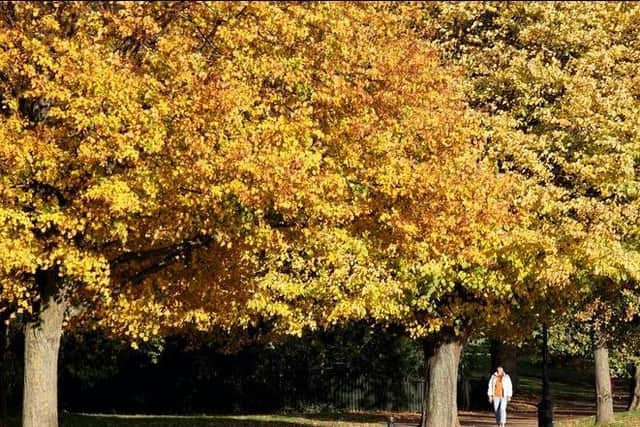Parks and green spaces in Bedford missing out on lottery cash
and live on Freeview channel 276
People have a newfound appreciation for their parks and green spaces since the country was laid low by the coronavirus.
Yet squeezed council budgets across the UK have left many communities more reliant on other ways of raising cash to care for these refuges. A significant source is lottery funding.
Advertisement
Hide AdAdvertisement
Hide AdThe National Lottery Heritage Fund (NLHF) is a major distributor of lottery money – it handed out £406 million for parks and similar green spaces across the UK in the decade to 2019-20, according to figures obtained by RADAR under the Freedom of Information Act.


Parks and similar green spaces in Bedford – or projects directly linked to them – received £137,200 from the NLHF over the period.
This was equivalent to only 79p per person in the area, based on Office for National Statistics population estimates.
The data includes funding for public parks and squares, cemeteries and pay-to-enter gardens.
Advertisement
Hide AdAdvertisement
Hide AdBut analysis shows these grants, for which councils and other organisations can apply, are unevenly spread across the country.
Grants given to projects in the East of England totalled £31.6 million over the last decade. At £5.07 per head, this puts it seventh of the 12 UK regions: nine in England and the three other UK nations.
London took the lion’s share, at £11.94 per head, followed by Scotland (£6.81), while the East Midlands saw the least (£4.12).
Helen Griffiths, chief executive of Fields in Trust, said the virus has put a spotlight on inequality of access to the outdoors across the country.
Advertisement
Hide AdAdvertisement
Hide AdThe charity’s Green Space Index, released earlier this year, estimates around 5,900 people in Bedford live more than a 10-minute walk from a green space, among 330,000 across the East of England in the same position.
The group says it is working in areas with the poorest access to try to address these “significant” imbalances.
“A similar approach, directing lottery funding to those with limited access to green space, could help to level up distribution,” said Ms Griffiths.
But the longer-term solution is for parks to be funded through councils, she added.
Advertisement
Hide AdAdvertisement
Hide Ad“They are arguably the most universal of all our public services, used by the entire community, from pre-school children through to retired adults. Yet unlike education or libraries, parks are a discretionary service which councils have no statutory duty to provide.”
For Ben Cooper, a researcher at think tank the Fabian Society, both sources of funding need addressing.
“We’ve seen how important parks and green spaces are for all communities during the pandemic,” said Mr Cooper, who has researched the distribution of lottery money.
“They are respite from work and home, they provide children with vital space to play and learn, and community groups somewhere to meet. They are imperative for the physical and mental health of society, which is why these funding disparities need to be urgently addressed.
Advertisement
Hide AdAdvertisement
Hide Ad“We need both equitable National Lottery funding and proper funding for local government to improve green spaces for all communities. If the Government’s levelling up agenda is serious, they will make it a priority.”
This seems all the more urgent as the NLHF figures show a drop in funding for parks in recent years.
In 2019-20, £15.6 million worth of lottery grants were handed out across the UK, the second-lowest total for any year in the last decade – after 2018-19 (£12.8 million) – and down from a high of £65.6 million in 2011-12.
The newly formed All-Party Parliamentary Group on Parks and Green Spaces wants the Government to provide £1 billion a year for the next three years for green spaces to shore up council budgets.
Advertisement
Hide AdAdvertisement
Hide AdIt also wants to see cash targeted to ensure the most deprived communities have access to “Green Flag Award” parks – a prize which aims to set a benchmark of quality for outdoor space.
In Bedford, four parks received the Green Flag Award from the charity Keep Britain Tidy, which manages the programme. Read full story here.These were among 162 places across the East of England to retain or gain the award this year.
The charity’s deputy chief executive Richard McIlwain said there was “definitely a case for access to green space to be levelled up”.
He added: “Our view is that lottery funding can play a vital role in providing the capital investment required to improve some of our parks, but it should never be viewed as a direct replacement for the capital and revenue funding required by local authority park services.”
Advertisement
Hide AdAdvertisement
Hide AdDrew Bennellick, head of land and nature policy at the NLHF, said the figures take a “narrow view" of the work the group covers, while warning that long-term public funding was essential to maintain green spaces.
“Where we have not funded a park or designed landscape, it is very likely we will have funded other green projects, such as those on nature reserves, wildlife conservation, tree planting or nature study groups," he added.
"If we include those, we have funded around 90% of all UK local authorities for landscape and nature projects over the last 10 years.”
Mr Bennellick said the NLHF has helped with more than 900 park projects to date, adding: "But with an estimated 27,000 parks across the UK, we can never be a replacement for long-term public funding for green spaces."
A government spokesman said all NLHF funding decisions are taken independent of government, and that it was committed to ensuring funding is shared with those who need it most.